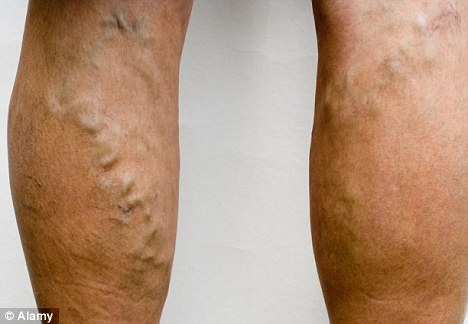Even if you have never sewed faux fur, our tips will help to avoid a number of problems and you will learn how to work with this difficult material.
All the nuances that I encountered while sewing faux fur, only at first glance turned out to be difficult. There is a solution for any situation. And in this case, the excitement is great and it should give in.
Artificial fur

Most often, faux fur is made from synthetic raw materials on a knitted basis.
Today on sale you can find faux fur on a cotton, viscose and even silk fabric basis.
The fur is with short and long nap, as well as artificial sheepskin and astrakhan.
The level of technology is so high that some representatives of faux fur duplicate natural so precisely that you won’t understand at first glance that you have an imitation in front of you. Especially such quality faux fur boasts the brand Tissavel.
Pattern
Choose simple models with a minimum of detail. It is easiest to work with straight-cut patterns and oversized silhouettes, with a stand-up collar or no collar at all.
- Special offer

- 1
- 2
- 3
- 4
- Best-seller
- Special offer

- 1
- 2
- 3
- 4
- Special offer

- 1
- 2
- 3
- 4
If you want to sew a model with lapels, choose patterns of models with a turn-down collar.
- Special offer

- 1
- 2
- 3
- 4
- Best-seller
- Special offer

- 1
- 2
- 3
- 4
Product Layout
Before proceeding with the cutting of parts made of artificial fur, it is necessary to stitch the product model. This is a prerequisite for working with faux fur. Since if you cut the product immediately, it will be extremely difficult to make adjustments. And the layout will help to correct all inaccuracies, fit the model on the figure and, possibly, replace one pattern with another.
What is a product probe and why to sew it
Pile direction
Items of faux fur, as a rule, are cut only in the direction of the pile.
The direction of the pile can be determined as follows:
with your fingertips, draw along the surface of the faux fur, if the fur lays down smoothly, that means you ran your hand in the direction of the pile, if the fibers resist and puff, then against the pile.
The finished product from faux fur pile should be directed from top to bottom.
Cutting and marking
The fur is laid out in one layer, with the wrong side up.
All details of the product from faux fur are cut exactly in one direction. The direction of the lobar coincides with the direction of the pile.

For convenience, re-pair paired parts on tracing paper in a mirror image.
On a paper pattern of unpaired or asymmetric parts, be sure to indicate the front and wrong sides, so as not to confuse.

For marking details tailor's chalk or marker on the fabric is suitable. In addition, you can cut all the parts with the same allowances using a special ruler for allowances.

The cutting of parts is carried out with a circular cutting knife, a scalpel or a safety razor blade, as well as tailor's scissors and only on the wrong side. In this case, only the woven base is cut, without damaging the fur itself, in order to keep the pile whole.
After cutting, you need to walk through the sections of the parts with a brush or gently collect the trimmed villi by hand. Or use the life hack from our master class:
How to cut faux fur and avoid friability
Allowances
For all sections, leave allowances of 2 cm, at the bottom of the product and sleeves - 4 cm.
If the fur coat is not picked up, then the stock allowance on the board can be left, as in other cuts - 2 cm and treated with a lining with a small roll of fur on the lining. Or with allowances of 3-4 cm to form a fur approach on board 2-3 cm.
How to make a seam with a transitional edging
Lining
For faux fur lining fabrics made of viscose medium density, opaque are ideal.
Whether to choose a lining, plain or with a jacquard pattern is only a matter of taste.
Subboard
Patterns of models with selection it makes sense to choose only if you are going to sew a coat of thin faux fur, with a short and not very thick pile.
Needles and Thread

For faux fur on a knitted base, knitting needles are suitable, for a regular base - microtek needles, or universal needles No. 80−90.
The threads are either cotton or synthetic high quality.
Decoding and WTO



Faux fur does not require decanting and WTO. Moreover, any of these procedures can spoil faux fur completely and irrevocably! In the last photo it is clearly visible that the surface, appearance and structure of the fur has changed, the villi look singed, heaped.
But if ironing is necessary, for example, to eliminate creases, then do it competently: with a slightly heated iron, with the steam function turned off, only on the wrong side, with light pressure and on a soft substrate, which can serve as an unnecessary flap of the same fur.
And remember the main rule: before ironing, be sure to try on an unnecessary piece of faux fur!
Duplicate or not?
In the usual way, namely with adhesive materials, artificial fur cannot be duplicated. If the fur base is thin, plastic and does not hold well on a knitted basis, then to give shape stability to individual details and the product as a whole, they can be duplicated manually with non-cool materials.
Joint reinforcement



To strengthen the shoulder and side seams, the armhole line and the neckline, use a cotton kiper tape that must be sewn along the marked seam line with approximately 1–2 mm approaching it.
How to sew and sew parts from bulk fabrics
How and with what details

It is best to use special clips or long patchwork pins to knit faux fur parts. The choice depends solely on the type of faux fur, its thickness, length and density of the pile, as well as the basis of the fur.



During knitting and sewing of parts made of faux fur, it is necessary to carefully naughty villi inside with a darn needle or a knitting needle.
Flat seams

The easiest way to make the seams flat is to cut the pile from the allowances and hem each allowance to the base manually with a blind or goat seam.
If the pile is short or you sew from artificial astrakhan fur, give preference to a decorative goat seam, in other cases use a blind seam.
Remember, this stage of manual work will require maximum patience and quite a lot of time to complete it.


On the front and back side, carefully remove the fur fibers that have fallen into the seam using a large needle. And lightly walk along the seam with a soft brush or a round comb with a natural hard pile.
How to sew a sleeve
In patterns of models where the sleeve ridge does not require fitting, its length coincides with the length of the armhole. But, since the fur has a volume, when sweeping parts you may encounter the fact that the sleeve’s eye will slightly excite.

You can neutralize this effect by frequently chipping parts along the seam, tucking the villi into the seam.
Coat from "Cheburashka": we sew from faux fur on Burda patterns
Full-fledged fur coat
If you plan to sew a full-fledged warm fur coat, then tune in to more zealous and longer work.
Since faux fur does not differ in heat-saving properties, they will have to be “grafted” on their own. Namely, manually duplicate calico all the details of a fur coat. In addition, choose a suitable insulation, quilting it with a lining cloth, then cut out the details and sew the insulated lining. Or buy a ready-made quilted lining fabric.
The author of the master class and photo: Julia Dekanova



